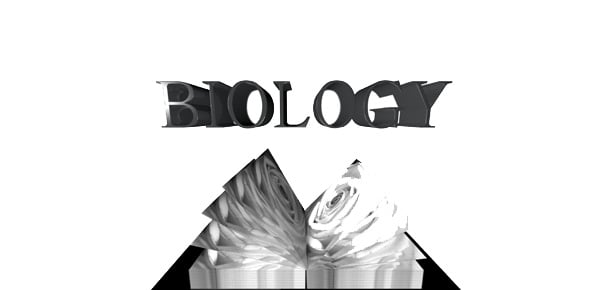Bio Test 2 (Part 3)

A biology exam, part 3 of 5.55 question test. Exam involving topics such as photosynthesis and cellular respiration.
- 1.
What is the process by which NADH transfers electrons to oxygen?
- A.
Glycolysis
- B.
Acetyl-CoA formation
- C.
The Krebs cycle
- D.
Electron transfer phosphorylation
- E.
Substrate-level phosphorylation
Correct Answer
D. Electron transfer phosphorylation -
- 2.
The electron transfer chain is located
- A.
On the inner membrane of the mitochondria.
- B.
On the inner membrane of the chloroplasts.
- C.
In the fluid part of the chloroplast.
- D.
Throughout the cytoplasm of the cell.
- E.
On the plasma membrane of eukaryotes.
Correct Answer
A. On the inner membrane of the mitochondria. -
- 3.
The generation of concentration and electrical gradients across the membranes of mitochondria is known as which theory of ATP production?
- A.
Glycolytic
- B.
Negative ion generator
- C.
Phosphate pump
- D.
Chemiosmotic
- E.
None of these
Correct Answer
D. Chemiosmotic -
- 4.
Which of the following statements is true?
- A.
According to chemiosmotic theory, concentration and electric gradients drive the formation of ATP.
- B.
An electron loses energy each time it is transferred down the electron transfer chain.
- C.
There is a buildup of hydrogen ions in the outer compartment of the mitochondrion.
- D.
ATP synthases are channels for the passage of hydrogen ions.
- E.
All of these.
Correct Answer
E. All of these. -
- 5.
The amount of energy released from a glucose molecule is dependent on what happens to
- A.
Carbon atoms.
- B.
Oxygen atoms.
- C.
Hydrogen atoms.
- D.
Phosphorous atoms.
- E.
Water molecules.
Correct Answer
C. Hydrogen atoms. -
- 6.
The highly toxic cyanide poison binds to the last molecule in the electron transfer chain, halting additional electron transfer. What is the consequence?
- A.
Oxygen can't pick up electrons.
- B.
No more water will be formed.
- C.
No more ATP will be formed.
- D.
The affected individual will not survive.
- E.
All of these.
Correct Answer
E. All of these. -
- 7.
If anaerobic pathways follows glycolysis,
- A.
Co2 will be one of the products as pyruvate is converted to lactate.
- B.
The two NADH molecules produced during glycolysis will (depending on the organism) be used to reduce pyruvate to either lactate or ethanol and co2.
- C.
ATP will be required to convert pyruvate to either lactate or ethanol and co2.
- D.
Oxidative phosphorylation occurs either on the plasma membrane or on derivatives of the plasma membrane.
- E.
None of these.
Correct Answer
B. The two NADH molecules produced during glycolysis will (depending on the organism) be used to reduce pyruvate to either lactate or ethanol and co2. -
- 8.
Mitosis and cytoplasmic division function in
- A.
Growth.
- B.
Repair of damaged tissue.
- C.
Replacement of worn-out cells.
- D.
Asexual reproduction.
- E.
All of these.
Correct Answer
E. All of these. -
- 9.
In mitosis, if a parent cell has 16 chromosomes, each daughter cell will have how many chromosomes?
- A.
64
- B.
32
- C.
16
- D.
8
- E.
4
Correct Answer
C. 16 -
- 10.
When a cell undergoes mitosis,
- A.
The daughter cells have identical genes.
- B.
The daughter cell has genes identical to those of the mother cell that produced it.
- C.
The amount of cytoplasm in the mother cell and in each of the daughter cells is equal.
- D.
There is an exact duplication and division of all of the organelles between daughter cells.
- E.
The daughter cells have identical genes and the daughter cell has genes identical to those of the mother cell that produced it.
Correct Answer
E. The daughter cells have identical genes and the daughter cell has genes identical to those of the mother cell that produced it. -
- 11.
When cells are not responding to normal controls over growth and division, they form a tissir mass known as a
- A.
Metastasis.
- B.
Malignancy.
- C.
Tumor.
- D.
Carcinogen.
- E.
Nucleosome.
Correct Answer
C. Tumor. -
Quiz Review Timeline +
Our quizzes are rigorously reviewed, monitored and continuously updated by our expert board to maintain accuracy, relevance, and timeliness.
-
Current Version
-
Mar 21, 2022Quiz Edited by
ProProfs Editorial Team -
Dec 12, 2009Quiz Created by
Ohchimonkey
- Aeronautics Quizzes
- Aerospace Quizzes
- Agricultural Science Quizzes
- Astrology Quizzes
- Astronomy Quizzes
- Atom Quizzes
- Biochemistry Quizzes
- Biomechanics Quizzes
- Biostatistics Quizzes
- Biotechnology Quizzes
- Botany Quizzes
- Branches Of Science Quizzes
- Chemistry Quizzes
- Cytology Quizzes
- Easy Science Quizzes
- Ecology Quizzes
- Electrical Quizzes
- Embryology Quizzes
- Endocrinology Quizzes
- Engineering Quizzes
- Environmental Science Quizzes
- Epidemiology Quizzes
- Experiment Quizzes
- Forestry Quizzes
- Fossil Quizzes
- Gas Quizzes
- General Science Quizzes
- Genetics Quizzes
- Histology Quizzes
- Human Biology Quizzes
- Integrated Science Quizzes
- Invention Quizzes
- Library Science Quizzes
- Lighting Quizzes
- Liquid Quizzes
- Marine Biology Quizzes
- Microbiology Quizzes
- Molecular Biology Quizzes
- Nature Quizzes
- Neuroscience Quizzes
- Nuclear Science Quizzes
- Oceanography Quizzes
- Physics Quizzes
- Psychology Quizzes
- Science And Technology Quizzes
- Science Glossary Quizzes
- Science Knowledge Quizzes
- Science Practice Quizzes
- Scientific Method Quizzes
- Scientific Notation Quizzes
- Soil Science Quizzes
- Solar System Quizzes
- Solid Quizzes
 Back to top
Back to top


